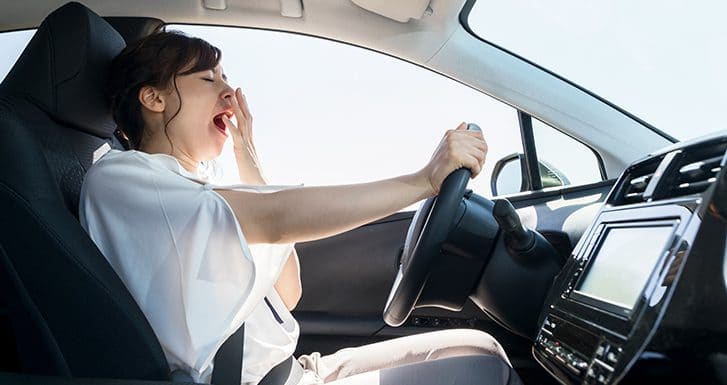
Three Dangerous Driving Decisions That Can Be Deadly

Unfortunately, you cannot control what another individual does when he or she gets into a vehicle. However, you control what you do as a driver. Your driving decisions each day can keep you safe or place you and others at risk. Below are three dangerous driving decisions that can result in a tragic accident that may take someone’s life.
The Three Dangerous “Ds” of Driving
Dangerous Driving Decision 1: Distracted Driving
Distracted driving is becoming one of the most common of the dangerous driving decisions. In 2016, distracted driving accidents caused roughly 391,000 injuries and 3,450 fatalities in the United States.
During daylight hours, an estimated 481,000 drivers are using their cell phones while driving. Cell phone use is one of the most common types of distracted driving. Texting and driving is one of the most dangerous forms of distracted driving as it involves all three types of distracted driving.
To avoid a distracted driving accident, turn your cell phone off or engage the do not disturb function. Also, avoid any activity that requires you to remove your hands from the steering wheel, look away from the road, or think about anything other than the task of driving. Common dangerous driving distractions that can lead to traffic accidents include:
- Eating or drinking
- Grooming
- Reading or sending emails & texts
- Watching or making videos
- Taking pictures
- Reaching for objects
- Interacting with passengers
- Daydreaming
Dangerous Driving Decision 2: Drunk Driving
Drunk driving causes thousands of injuries and deaths each year. During 2017, someone died in a DUI accident every 48 minutes. During that year, 10,874 people lost their lives in drunk driving accidents in the United States. DUI fatalities totaled 29 percent of the deaths in traffic accidents during 2017. DUI crashes cost an estimated $44 billion a year (as of 2010).
As with distracted driving, drunk driving is a dangerous driving decision that is avoidable. You can prevent drunk driving accidents by choosing not to drink and drive. Ways that you can avoid a DUI accident include:
- Take a designated driver with you whenever you know you will be consuming alcohol
- Arrange for overnight accommodations
- Take a taxi, Uber, Lyft, bus, or other form of public transportation
- Call a friend or family member for a ride
- Take the keys away from someone who is drinking too much
- Monitor your guests closely for signs of intoxication
Dangerous Driving Decision 3: Drowsy Driving
The third “D” of our dangerous driving decisions is drowsy driving. About 100,000 incidents of drowsy driving are reported each year in police crash reports. Drowsy driving accidents are blamed for causing 5,000 deaths in 2015. Drowsy drivers injure thousands of people each year. A startling number of adult drivers admit to falling asleep while driving.
Even though a driver may not fall asleep while driving, driving while you are drowsy can severely impair your ability to operate a vehicle safely. As with alcohol or drugs, fatigue and lack of sleep can decrease your reaction time and awareness of hazards. If you are driving after being awake for more than 20 hours, your ability to operate the vehicle is impaired the same as if your BAC was .08 (the legal limit).
As with drunk driving and distracted driving, drowsy driving is preventable. Do not attempt to operate a vehicle if you are fatigued or drowsy. The AAA Exchange discusses tips and resources for how you can avoid drowsy driving accidents.
Call an Indianapolis Car Accident Attorney for More Information
Drivers who are negligent are liable for damages caused by a traffic accident. The PBAR legal team assists accident victims who need to file injury claims related to car accidents.
Contact Poynter & Bucheri by calling 1-800-265-9881 or (317) 780-8000 to schedule a free consultation with an Indianapolis car accident attorney.
